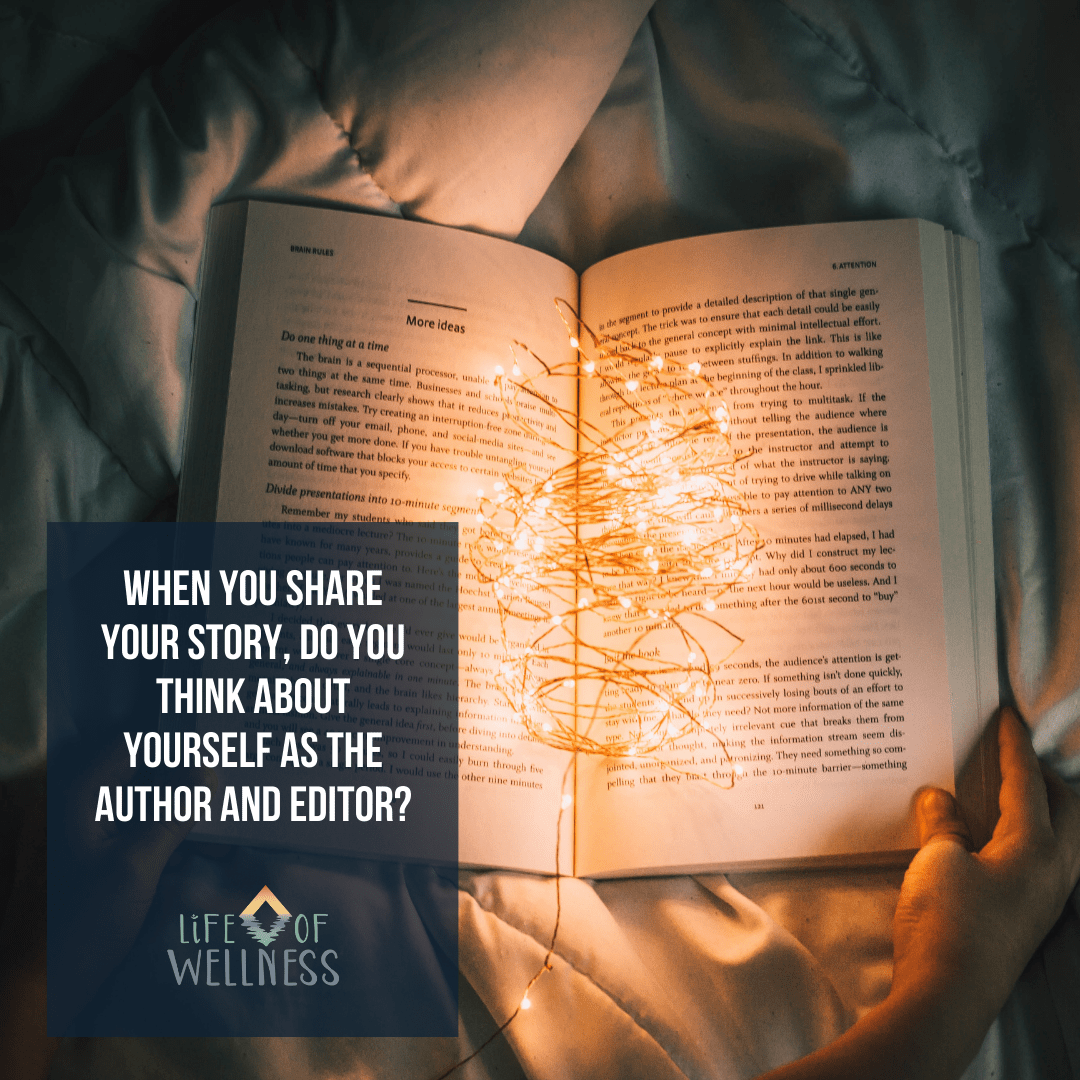Have you ever heard the expression “burn the boats?”
The first time I heard it was on September 9th, 2016. I had recently begun to recover from complete burnout and the resulting illnesses in my body. A result fueled by decades of unresolved trauma and believing I always had to be productive. I worked 80 hours a week and volunteered over 1200 hours a year at its height. Still at least two years away from realizing that I was allowed to say no, and day by day burning myself out trying to meet the expectations of my mind, boss, and society.
I had been on a steady decline physically, mentally, and emotionally for over a year. If I didn’t do something to change this path soon, I truly believed I wouldn’t make it. So, here I was at a metaphorical crossroads; I had to take a new way, and failure was not an option. The changes had started, and on this day, I was taking a giant leap; I went back to university.
Enjoying a sunny fall Friday, I arrived at the university and sat down in class with as much excitement as nerves. After sitting through the day’s lectures and discussions, I headed home in my car. As I drove, my mentor called to see how my day was. I had recently met him at an event, and he had offered to support me navigate through the path forward. When asked how my day was, I answered, “Honestly, I’m exhausted.” I was still working and volunteering just as much, but now I was also trying to do something that would allow me to change my future. It was too much.
“You need to burn the boats,” he said.
Where did burn the boats come from
The concept of “burn the boats” is often traced to an apocryphal story of the conquest of the Aztec Empire by Hernán Cortés. It’s 1519, Cortés led a large expedition to Mexico to capture the magnificent treasure said to be held there. Cortés destroyed their ships when they arrived, leaving his men to conquer or perish. Within two years, they had succeeded. This is one of many historical examples, such as the Ancient Greeks or Tariq bin Ziyad addressing his small army after entering Spain through the sea in 711 A.D.
In all cases, the legend says that we must remove our safety nets, creating a point of no return so that we have no choice but to focus all our energy on succeeding. This message is all around us; we see it in pop culture, the movies, and popular speakers such as Tony Robbins. Each time the message is clear, this is how we create success.
What did my mentor mean?
He wanted me to quit my job, focus on nothing else than school and change my life. This would mean letting go of the financial safety of working and living from savings, depleting our safety net. Let go of anything that was not in service of the future, even when I didn’t know what that future was yet. I had no idea if I wanted to change careers; I just knew I needed to learn how to better support my health. As I asked a couple of questions, he said I either wanted this and was prepared to do what it took or not.
He expected me to give up everything leaving me with no choice but to succeed. I got off the call a bit stunned. Could I do what he said? Was risking my family’s savings or my career the right decision if I could? The following day, I put these thoughts aside and went to school. Over the next week, I pondered this advice, avoiding the phone calls and emails asking me if I was going to listen. For the last 20 years, I have done what everyone expected of me. If I was going to take a new path, I needed to give myself the space to think for myself.
My boiling point
The truth behind “burn the boats” is that you are in a different psychological state. In all historical examples, the boats were a lifeline to safety. They had no choice but to succeed or die trying. Then, just a few weeks later, I was standing at the United Center in Chicago with 23,000 strangers, as Tony Robbins said the same thing. Once again, the message that this was the only path to success, only now from one of the most globally famous coaches.
And then, a family emergency; I’m now taking care of a family member in a health crisis and, at the same time, working 70-80 hours, volunteering, and going to university. I was too tired to take any more action. The burnout and illness are creeping back in and fast.
Knowing I needed to do something or break, I put school on pause and went to my boss and told her I might need to take some time off. Looking back, I shouldn’t have been blindsided by her response, but at the moment, I was not only surprised but also deeply hurt. She tried to prevent me from taking the time I needed by shaming me into complying. She shamed me for wanting to care for my family. Using everything she knew about me to get her way. I was a bad mom, and bringing this all into my home was terrible for my kids and marriage.
I had done everything she asked of me for more than five years. Taken on extra projects and worked the hours needed to complete them. Having no idea how to handle what had happened, I reached out to HR and asked for help. Not five minutes later, she called to threaten me.
Having no choice
After reaching out to a friend in the company to figure out what I do, they helped me connect with the head of human resources. Within hours, I was placed on leave; it occurred to me as I sat in my car, not feeling I could even drive. Had she just burned my boats? At this point, I had no idea how long the leave was or what was next. What started as the first time I had honestly tried to put my needs first; had turned into a nightmare, and I felt like my world was crumbling around me.
I had chosen not to take the advice and what felt like rashly leaving my career, only to be forced to stand up for myself against this harmful treatment and decide to leave my job anyway. For the next few months, I was consumed by my family member’s health and the grief of what had happened at my job. I was scared, constantly worrying about how to move forward. Every day, feeling like I had no choice, I would do everything to move forward.
The cost of burning the boats
Let’s look back to Hernán Cortés and the Aztec Empire. He arrived at what is now called the Yucatan Peninsula in 11 ships, with 508 soldiers, 100 sailors, and 16 horses. Then he forced them to fight for their lives so he could have a fortune. Six hundred eight people were forced into a fight response in their nervous system, which would take almost two years. And here we are, more than 500 years later, still pushing this as the only way to succeed?
Here is what neither of my coaches took the responsibility to include with their advice. There are long-term effects of living in a stress response!
The autonomic nervous system (ANS) has a direct role in the physical response to stress and is divided into the sympathetic nervous system (SNS) and the parasympathetic nervous system (PNS). When the body is stressed, the SNS contributes to what is known as the sympathetic response. When the body is calm, the SNS contributes to what is known as the parasympathetic response.
The sympathetic response, commonly known as the “fight or flight” response is oversimplified; there are several other ways humans have evolved to adapt to stress in the 21st century. Listed below is a combination of research presented by Alberta Health Services (AHS) and that of Dr. Curtis Reisinger, a clinical psychologist at Zucker Hillside Hospital in Long Island, NY. (Borkhataria, 2017)
The seven responses to stress include:
1. Fight: Fighting a threat
2. Flight: Fleeing a threat
3. Freeze: Freezing and not doing anything in response to a threat
4. Flocking: A group response to a perceived threat or event
5. Flooding: Being flooded with emotions in response to a threat
6. Fawn: Cooperating or submitting to one’s threat or captor
7. Fatigue: Feeling tired and sleeping in response to a threat
The long-term activation of the stress response system and the overexposure to cortisol and other stress hormones can disrupt almost all your body’s processes. This increases your risk of many health problems, including Anxiety and Depression.
There has to be another way.
After spending months living with uncertainty, grief, and stress, I fell into a depression. The more I had to fight to survive, the worse it felt. Even as I acted, returned to school, and connected with what I wanted to do, my mental health declined.
I knew there had to be another way, and I began to make this the focus of my education. I started diving into stress, trauma, grief, the body’s systems, the brain, and anything else I could get my hands on to understand what was happening to me. This isn’t the only time we have used fear, a sympathetic nervous system, to motivate humanity. It is all around us and has been getting worse for decades. We are working more, resting less, playing less, all at the cost of productivity and a false sense of winning.
The overstimulation of our sympathetic nervous system is slowly causing inflammation, illness, mental health concerns, and chronic illness. This motivation tactic has a cost more expensive than any of the benefits.
What if we reached our goals with self-compassion?
One of the reasons this has worked is that we are too afraid to fail. The fear that we could fail that we typically face is overwhelmed by the fear that we will forget. We have no time for distractions; we focus solely on what we need to do. So, what if we could cultivate a similar response without burning our safety nets?
Instead of causing fear to clear our minds of fear of failure, what if we created a community that supported us when we needed a boost? Rather than overwhelming our brains with fear so we wouldn’t get distracted, we compassionately removed the distractions that pulled us from our dreams. What if we acknowledged the patterns that got in our way and compassionately worked to resolve or support ourselves?
Taking a stand for myself
That first moment I acknowledged I needed a break and asked for help was a breakthrough for me. Regardless of how it turned out, it was the first step in the change I had always needed. I had acted with self-compassion, asking for what I needed, standing up for myself when I was treated poorly, and being okay that it took me months to recover. Instead of pushing through, I worked through. Rather than acting from fear, I listened and operated from love. I took one action daily, protecting my sleep, exercise, and personal time.
Now, when I look back at those moments with my boss, of the shame she was using to force me to comply, or the threats that followed, I can see them as a gift; I needed something this ridiculous to break out of the productivity at all costs fog I was blinded by. The same can be said for the coach, who used the same shame to tell me I either wanted it or not. Tony Robbins uses the same tactic. You either do it his way, or you won’t succeed. You have to “unleash the power within,” or you will fail. A belief strategically built over days, only to be leveraged to sell you the $10,000 program you needed to be unleashed and successful.
I couldn’t have written it better myself
SPOILER ALERT: The following letter is at the end of the movie The Last Word, the character Anne Sherman, played by actress Amanda Seyfried, provides the following resignation letter to her boss.
This is not my letter of resignation. This is my obituary. The young girl who worked for you for the last seven years is dead and buried. She leaves behind a lifetime of indecision, hesitation, and fear. She will not be missed, she will not be mourned because she was really never alive to begin with. But she is now. And she has her entire life in front of her. An entire life just waiting to be filled.
It wasn’t that she couldn’t do the job anymore. No, it was so much more than that. She was no longer be the person she was before.
I realized I had actually burned the boats as I listened to the letter. But not in the way the legend, my boss or the coaches had intended.
The part of me who always needed to please those people at the expense of my health and mental health was gone. She died in the office that day, leaving behind the need for their approval. That part of me prevented me from living authentically with self-compassion, prevented me from feeling alive, and died.
Disclaimer:
No content on this site, regardless of date, should ever be used as a substitute for direct medical advice from your doctor or other qualified clinicians.




Thank you. This is so meaningful to me.
Happy to hear that this was meaningful for you, and you are welcome.
This is great. The past is impossible to completely forget, but moving on is entirely possible! cutting the ties off the boats on the dock and sending a flame into them means no more easy leaving when things get hard, as the song says, step into a new day, we can rise up from the dust and walk away! Key is don’t even look back, you’re not missing anything, and it’s not missing you!
Thank you for sharing your reflection. Our past is a part of who we are today. Forgetting it is like forgetting how we got here, to this moment right now. This would rob us of the beauty of acknowledging the amazing skills that we forged in ourselves during the past that shine in us today.
That was Tarq Bin Zyad who ordered his army after landing on Spainish seashore and conquered Spain.
Thank you for sharing this. Quite interesting that I had to research Tarq Bin Zyad to find this reference from 711 AD. I’ll add this detail. Have a wonderful day.
Hernan Cortez also later said “Burn the Boats” 1519 (Tarq Bin Zyad said in 711AD)
What is key to remember is they not only said it but the did it. When a person sees their leader fully commit to a cause and there is no convenient way to turn back then it is amazing what can be accomplished. Hiw different things might have been for Tarq and Hernan if they had said burn all the boats save my own.
YES!!
I get it. When you really decide on the plans you have ahead. That’s it you move on. Conquer or be conquered.
It takes courage to burn all your boats and assume and point of no return.